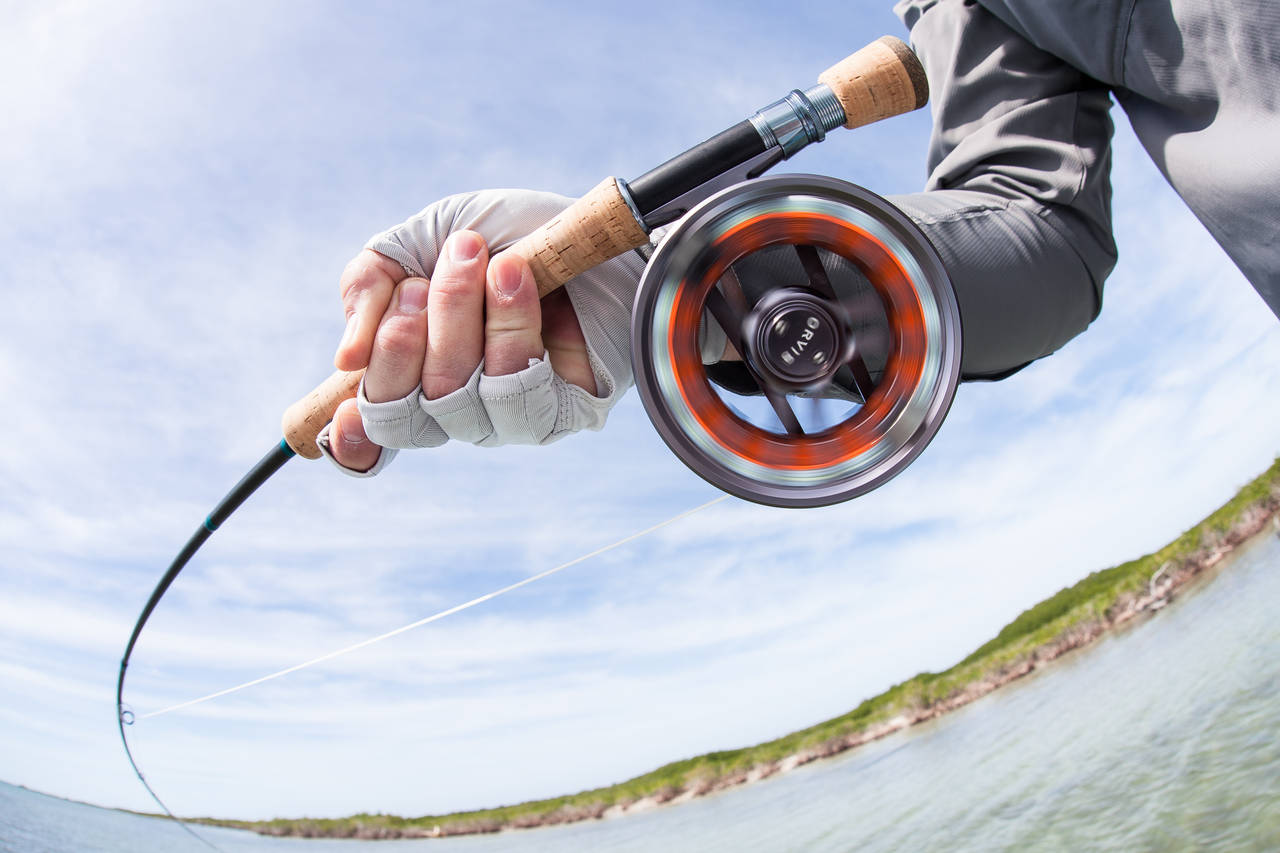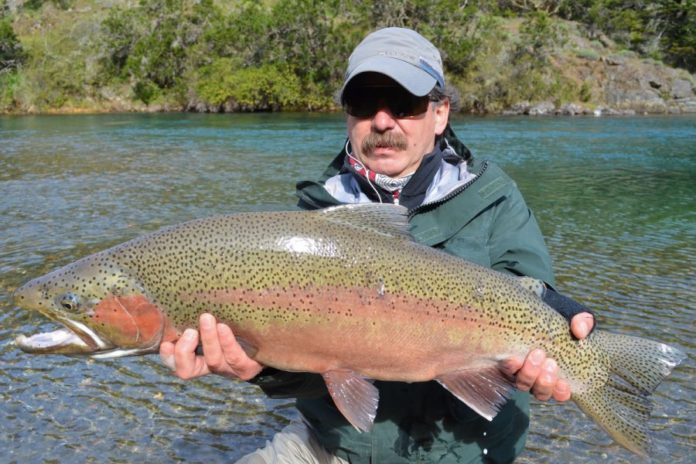Written by: Brian McGeehan, Montana Angler Fly Fishing
Even experienced anglers don’t get many shots a really big fish, so it’s best to be prepared to make each one count.
Photos courtesy Montana Angler (except where noted)
There is a natural evolution in the sport of fly fishing. Early in an angler’s initiation to the sport, hooking and landing any fish is paramount. Over time, though, a fly fisher slowly begins to improve his or her skills, and the focus often shifts from numbers to quality. The focus often become hooking and landing truly big fish. Whether you are still a novice or have paid your dues for a few years, it’s important to have a game plan for landing big fish once they are hooked. Even highly experienced anglers only have a few shots at really big fish in a given season, and when the moment of truth arrives, you want to stack the deck in your favor. Like a great baseball hitter, even the best anglers never bat 1.000. You always need a little luck on your side to land “the big one,” but there are a few tips that can help you make your own luck.
Setting the Hook
It all starts with the hook set. When you set the hook, it is important to visualize where your fly is in relation to where the fish is. In most cases, the fish is facing upstream, and your fly is drifting downstream with the current. When a fish strikes, set the hook by pulling your rod tip to the downstream side to maximize the placement of the fly. For example, if you are fishing with the current moving right to left, set the hook by swinging your rod tip to the left. With your rod at a low angle, aggressively rip the rod down the river with a sideways motion. A downstream hook set will often place the hook in the corner of a trout’s mouth, where it tends to hold firmly. If you set upstream or lift the rod tip straight up, the hook is more likely to set in the front of the mouth or you may pull the fly right out of the fish’s mouth. A hook embedded in the front of the mouth is more likely to pull out later in the fight.

If your big fish heads downstream, they you should, too.
Let It Run
After a good hook set, the fish will likely enter flight-or-flight mode. The first few seconds of the fight are very important, as the trout is fresh and strong and can easily break the line. Early in the fight, you should err on the side of caution by letting the fish run and avoiding putting too much pressure on the fish. Lift the rod high and then tilt it at a shallow angle and prepare to react. Most of the time, a big fish will run quickly downriver. When a fish is running hard, you need to make sure the slack line between the reel and your rod hand line doesn’t catch around the butt of the reel, your feet, or any other obstacles as it goes up through the guides. Once the trout has pulled the loose line through the guides, let the reel’s drag system take over.
After the first blistering run, you can begin to apply more pressure to the trout. You do want to keep the rod tip up, at a 45 degree angle or slightly less. If the rod is at too high, you risk breaking it off, but if you don’t have any bend in the rod you do not allow the rod to act as a shock absorber that protects your tippet. If you’ve hooked a “hot” fish, don’t get your hands too close to the reel handle, as nothing stings like a knuckle blast from a fast spinning reel handle. And you certainly don’t want that knuckle to end up stopping the reel and breaking off the fish. Sometimes a big fish will get in the current and move downriver quickly. It is very difficult to bring a big fish back up through heavy current, so you often need to move down the river as quickly to have a shot at landing it.

Keeping your rod at a 45-degree angle puts pressure on the fish and protects your tippet.
Occasionally, a big fish will not run immediately after being hooked. Big brown trout are notorious for this. Many anglers make the mistake of assuming they have hooked a small fish and are then caught off guard when a big fish finally bolts. A good practice is to assume that every fish is big until you confirm otherwise. Sometimes a big trout will also run directly at you after being hooked, which can result in slack line that allows the fish to easily shake the hook out–especially if you’re fishing barbless. Be prepared to strip line aggressively when a fish runs at you, as your can pick up line much faster by stripping that you can by reeling. Once you have the fish tight, be ready to let the fish run by pinching the line somewhat loosely in your line hand to keep some tension on the line. Again once the fish pulls out the slack line, you should fight from the reel.
Rod Position
The position of your fly rod during the fight is very important. You always want to see a bend in the rod. The deeper the bend, the more pressure you’re putting on the fish. There is a sweet spot for every fish and every situation, and the only way to learn where the sweet spot is through trial and error. You’re probably going to lose a few fish by putting too much pressure on them. It is better for the fish that you bring them in fast, so losing a few fish by putting too much pressure on them is better than wearing them out to complete exhaustion. Each time you do lose a fish, assess what happened. A good rule of thumb is to keep the rod at a 45-degree angle with the water most of the time and then adjust accordingly. To relieve pressure on a fish, which is often important when a fish is freshly hooked or running hard, you can drop the angler or flatten the rod a bit. A flatter rod also reduces the friction of the line going through the guides. If you completely drop your rod and point it at the fish, there is no bend in the rod, which can be risky since a bent rod also helps act as a shock absorber to protect your tippet. When a fish turns back toward you, gets tired, or is running for an obstacle like a rapid, logjam, or the like, you should add extra pressure. The best way to add pressure is to lift the rod to a steeper angler with the rod but section nearly vertical.

The right drag setting can be the difference between a fish in the net and a “long-distance release.”
Photo by Chad Shmukler, Hatch Magazine
Reel Drag
In most trout fishing situations, a reel is mostly a storage device for fly line, and an expensive drag system is not really required. However, you will certainly miss a high-quality drag when you finally hook that trout of a lifetime, as the drag system is often critical to the success of landing that fish. The job of a drag system is to tire the fish out more quickly than if there was no drag on the reel. Setting the drag correctly is extremely important. For general fishing situations, set the drag so that the reel won’t backlash during the startup phase. You can check your drag by pulling the line aggressively off the reel in one pull. If the line on the reel forms a backlash, then the drag needs to be stronger.
When you see an expensive reel in the fly shop, the cost is generally in the drag system. A good drag will have a low “startup inertia”–in other words, it won’t get “stuck” before activating. A great drag system will also be very smooth and dispense pressure evenly. A good drag system can also be adjusted gradually, and you want to avoid a reel where a small twist of the drag knob results in a major change in the setting. Finally, high-quality reels have drags that do not “creep”–once you set the drag, it keeps that position and doesn’t drift later on its own.

You’ll have a much better chance of admiring your trophy if you use a net to land it.
Carry a Net
You don’t need a net for smaller trout, but if you are on water where big fish do reside, a net may make the difference between landing that fish of a lifetime and a “one that got away” story. So much goes into successfully landing a big fish–setting the hook, fighting with just the right amount of pressure, and finally bringing the fish to hand–and there are few things more heartbreaking than losing a big fish at your feet, especially if you didn’t bring a net. It is much more difficult to bring in a big fish if you are trying to hand-land it, plus you’ll have to fight the fish longer, thus decreasing the odds that the fish will survive once released. Never drag a fish up on shore or onto rocks at the river’s edge, as you could do irreparable harm. Do yourself and the trout of a lifetime a favor: bring a net!
Really big fish don’t come along every day. When that special moment finally arrives, make sure you are prepared to give yourself a better chance of admiring the big one up close.
Brian McGeehan is owner and outfitter of Montana Angler Fly Fishing, an Orvis-Endorsed Fly-Fishing Expedition in Bozeman, Montana.
Credit: Source link































